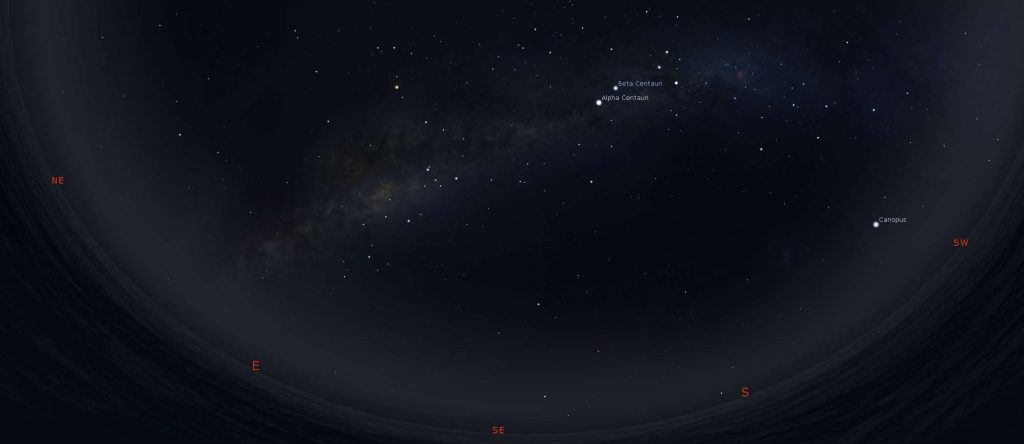Welcome to my astronomy and space website. Explore this month’s featured predictable astronomy event below. Alternatively explore the resources available on this website by using the above links.
July 2024’s featured predictable astronomy events
July’s evening unaided eye skywatching evening highlight is the Winter Milky Way. This is our home galaxy of which we are part. You will need to drive away from city lights however. It is a breathtaking sight if you have never seen it before! Don’t forget to look for what looks like dark clouds in front of it. These dark patches are dark nebula. They are enormous clouds of gas and dust that block the light of stars behind them. The most well known from an European astronomy viewpoint is the Coal Sack nebula. It is located near the Southern Cross. What should be even more well known is the dark constellation referred to by some First Nations peoples as the Emu. If you are looking for it, start by imaging the Coal Sack nebula as the head of the emu. Then look to the left of the Coal Sack nebula along the Milky Way. The body of the Emu is made up of more dark nebula.
Planet wise, Mercury makes an appearance in the evening twilight sky. It reaches maximum elongation on Monday 22 July. Look low above the North Western horizon. Saturn is beginning to rise earlier in the evening. From Sydney, it rises at 9.24 pm AEST mid-month. Look low on the Eastern horizon. Mars and Jupiter are visible above the Eastern horizon before morning twilight beings.
The dwarf planet Ceres is currently overhead as evening twilight ends. You will need either binoculars or a telescope to star hop to Ceres. Note that it will only appear as a faint star in either. As a general guide, Ceres is located in the body of the ‘Teapot’ of Sagittarius ‘The Archer’. A great finder chart can be found here. Note that you will have to reorient it correctly for the Southern hemisphere.
Mid-July 2024 presents a wonderful opportunity to see the International Space Station pass silently overhead in the evening twilight sky. Viewing times will depend on your location in Eastern Australia. View this separate post for more information.
For more information on these and other predictable astronomical events visible this month, visit the July 2024 Sky Events page.
